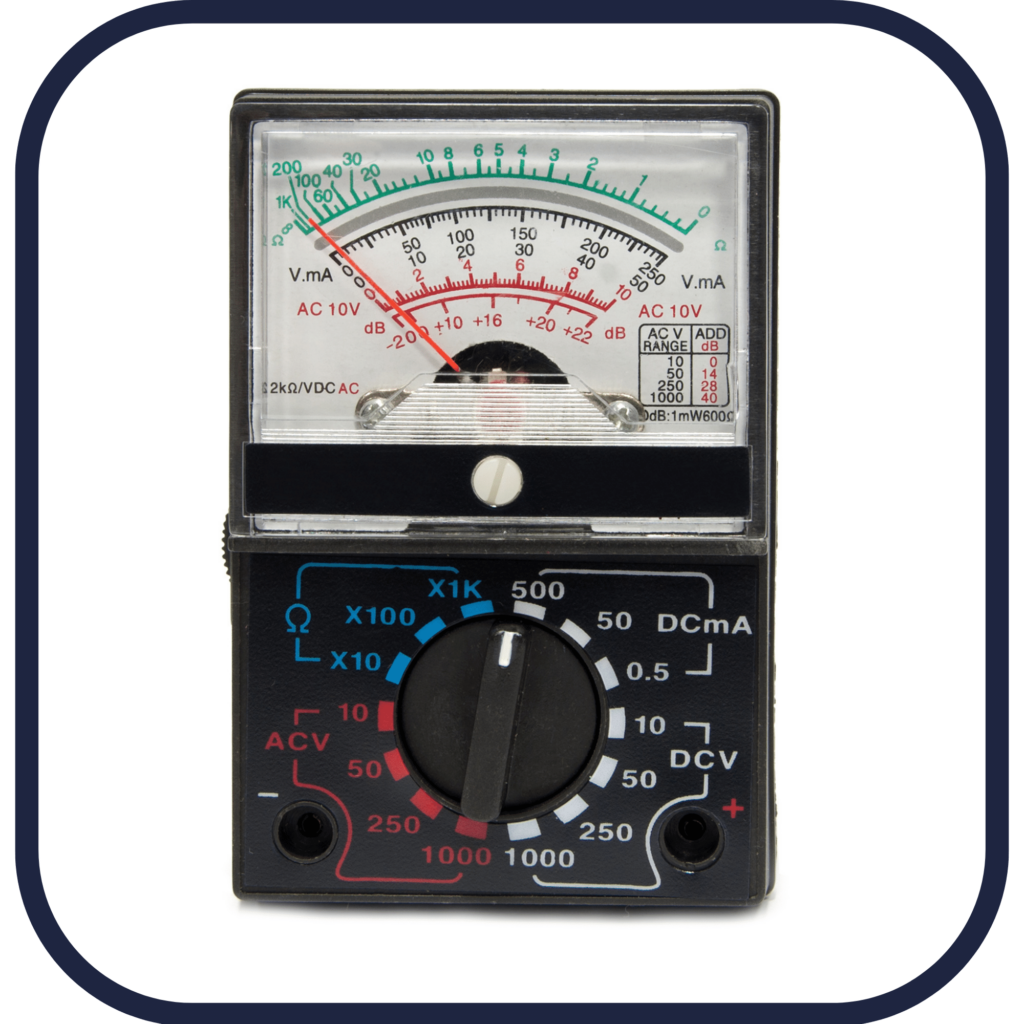30-second summary
Ammeter
An instrument used to measure currents is called an ammeter. To measure the current in a wire, you usually have to break or cut the wire and insert the ammeter so that the current to be measured passes through the meter.
The principle of operation of ammeters is based on the interaction between an electric current and a magnetic field. Ammeters are typically designed as a low-resistance device that is placed in series with the circuit being measured.
Analog and digital ammeters are two types of devices that are used to measure electric current.
Here are three examples of electric currents that can be measured by ammeters:
- Household circuits: The current flowing through a typical household circuit in the United States is 15-20 amperes.
- Automotive circuits: The current flowing through the battery or alternator of a car is typically 50-150 amperes.
- Small electronics: The current flowing through the power supply of a small electronic device, such as a cell phone or laptop, is typically 0.1-1 ampere.

Analog and Digital Ammeter
Analog and digital ammeters are two types of devices that are used to measure electric current.
Analog ammeters use a moving coil or moving iron mechanism to indicate the magnitude of the current. As the current flows through the ammeter, the mechanical movement of the coil or iron deflects a needle that is mounted on a calibrated scale. The scale is marked with units of current, typically in amperes. Analog ammeters are simple, inexpensive, and are still widely used in many applications. They are also known for their reliability and ruggedness.
Digital ammeters, on the other hand, use electronic circuitry to convert the current measurement into a digital readout. A microprocessor or other digital processing device converts the current signal into a numerical value that is displayed on a digital screen. Digital ammeters are often more accurate and precise than analog ammeters, and they are capable of measuring very small currents. They are also capable of measuring both AC and DC currents.
Typical measured currents
Here are six examples of electric currents that can be measured by ammeters, along with their typical values in amperes:
- Household circuits: The current flowing through a typical household circuit in the United States is 15-20 amperes.
- Automotive circuits: The current flowing through the battery or alternator of a car is typically 50-150 amperes.
- Small electronics: The current flowing through the power supply of a small electronic device, such as a cell phone or laptop, is typically 0.1-1 ampere.
- Industrial machinery: The current flowing through large industrial machinery can be several hundred to several thousand amperes.
- Power transmission lines: The current flowing through high-voltage power transmission lines can be tens of thousands of amperes.
- Electric vehicles: The current flowing through the charging circuit of an electric vehicle can be several hundred amperes.

